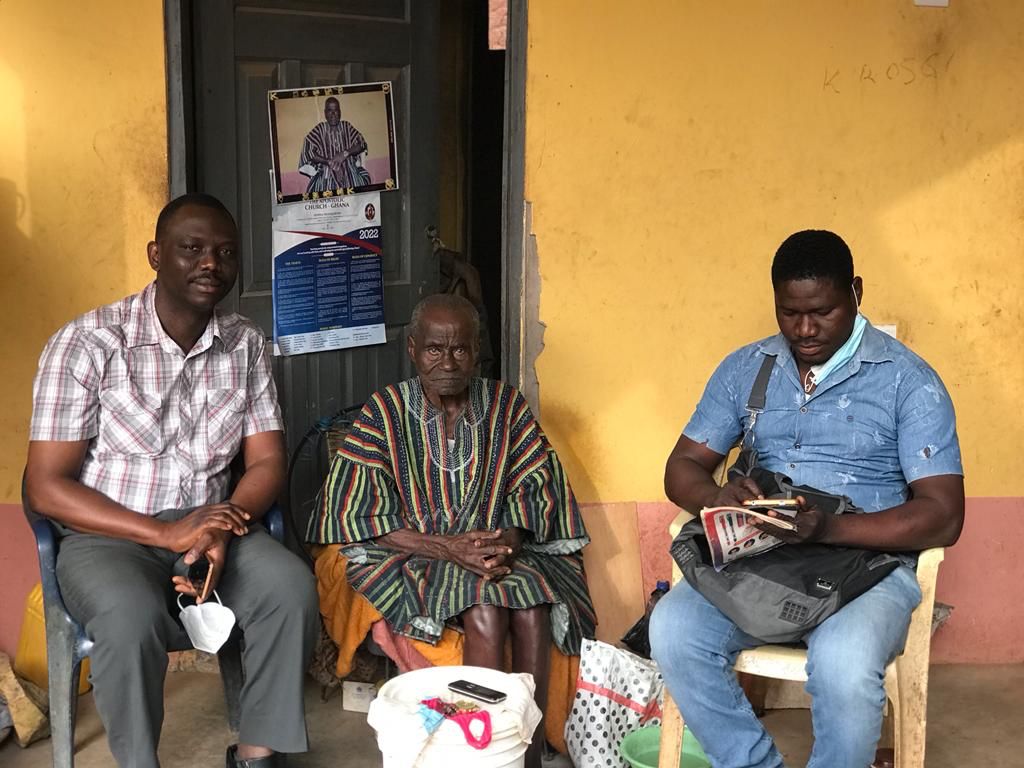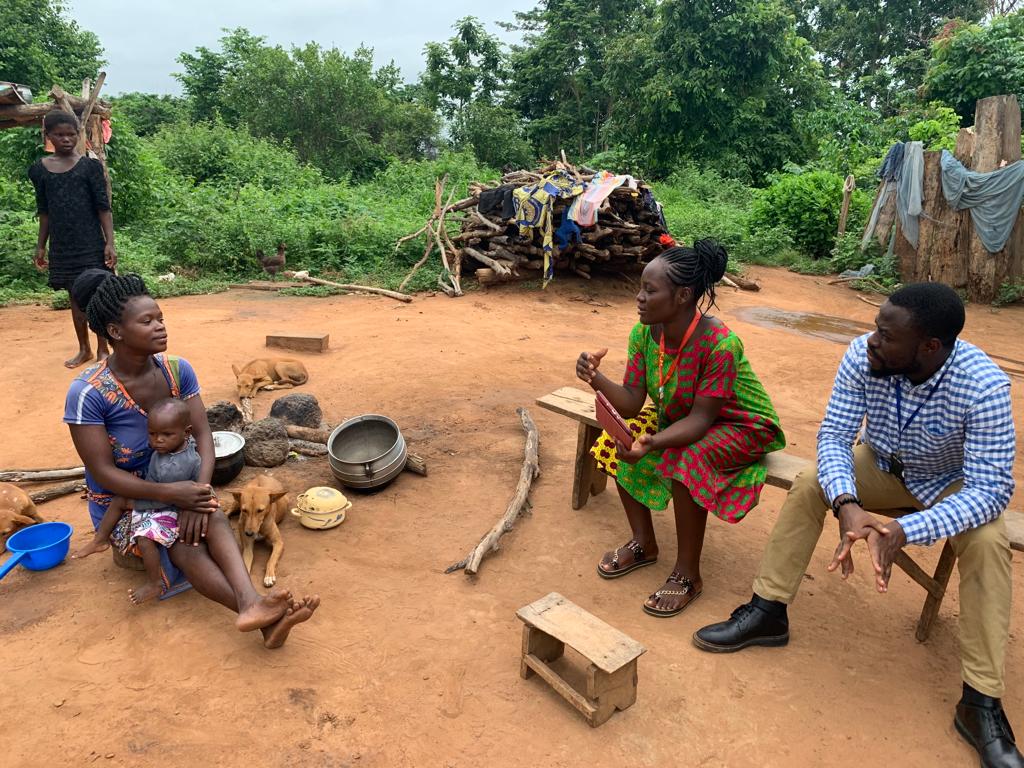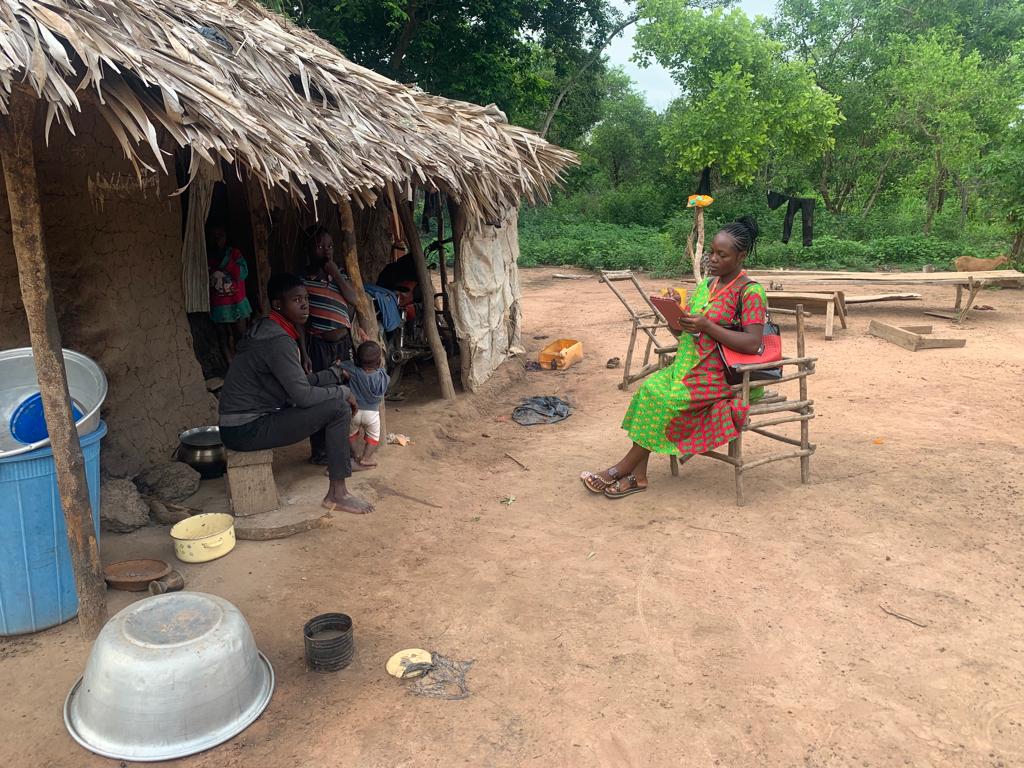KINTAMPO HEALTH DEMOGRAPHIC SURVEILLANCE SYSTEM
January 9, 2019 | Ongoing Project | Reading time: 5 min
Resident Population as of: 540,000
Parent institution: Kintampo Health Research Centre (KHRC)
Start Date: 02-06-2003
End Date:29-10-2032
The Health and Demographic Surveillance System serves as a resource to assess the demographic or health impact of various health interventions in the study area and also serve as the central population pool for the Research Centre. . The system is designed to maintain a longitudinal database through routine rounds of updates and visits to households. Field staff collect core demographic data such as migrations, pregnancies, births and deaths across our catchment areas made up of Six (6) districts in the Bono East Region of Ghana.
The study is also responsible for the conduct of Verbal Post Mortem (VPM) for all participant deaths within the study area using the WHO INTER-VA questionnaire. Currently, rounds of update occur twice (2) a year and last for a period of 6 months, however, depending on the availability of resources, the rounds of visit can be more frequent. The HDSS also serves as the platform for additional modules (socio-economic data, vaccinations, phone access and use etc.) to supplement core demographic data.
The KHDSS operates by enumerating all compounds with unique numbers. Then an initial census is conducted by registering individuals (name, sex, and date of birth) in each compound at the household level. This is to provide baseline demographic data on all residents. Each registered individual is assigned a unique permanent identification number that facilitates tracking and follow-up of persons within the system. Subsequently, regular rounds of data collection are done to update the system by registering all new individuals and households. Entry into the system after the initial census is mainly through birth and in-migrations and the main ways by which people exit the system are through death and out-migration.

Vital demographic events including birth, death and migrations occurring within the study sites are recorded in each round of visits. In the event of death, Verbal Autopsies are conducted to help ascertain the cause of death.

Objectives:
The primary aim of the HDSS is to accurately record the health and demographic details of the population within its coverage area. This data serves as a foundational resource for guiding future research, creating
a sampling framework for selecting participants for surveys, clinical trials, and other studies conducted by the Centre.
Field operations
Routine updates and other data collection are done electronically since its data management system was migrated from FoxPro (i.e. the Household Registration System2 (HRS2)) to the Open Health and Demographic
System (OpenHDS) platform in 2018. Two update rounds were conducted in 2021. In both update rounds, data on the core demographic events (pregnancy, births, deaths and migration) were collected. Also, the socio-economic status of all
households (profile), was updated and Socio-demographic data (Women Form) of all women within the reproductive age was collected. Again, verbal post-mortems (VPMs) are conducted electronically by trained field workers using the WHO
2016 InterVA tool.

Demographic Characteristics of the HDSS
The total resident population of the HDSS as of June 30, 2024, was 563,139 across the three sites, with 52.9% of the population being females. Children under five constituted 11.0% of
the total population. The Kintampo HDSS area is gradually becoming urbanized with 52.9% of the population living in urban areas, with an average household size of 4.8. Across the three sites, a total of 4,494 births and 1,053 deaths,
including 103 under-five deaths, were recorded in 2024. Verbal Autopsies were completed for 83.5% (879/1,053) of all deaths that occurred in the year. A summary of key descriptive characteristics of the KHDSS is provided in the table
below.
Table 1: Descriptive Characteristics of the Kintampo HDSS by Site
| Descriptive Characteristics | Kintampo as of December 5, 2024 | Nkoranza as of June 30, 2024 | Techiman as of June 30, 2024 | Total as of June 30, 2024 |
|---|---|---|---|---|
| Total Population (N, %) | 200,702 (35.6) | 127,191 (22.6) | 235,246 (41.8) | 563,139 (100) |
| Male Population (n, %) | 96,575 (48.1) | 59,948 (47.1) | 108,922 (46.3) | 265,445 (47.1) |
| Female Population (n, %) | 104,127 (51.9) | 67,243 (52.9) | 126,324 (53.7) | 297,694 (52.9) |
| Under-five Population (n, %) | 25,872 (12.9) | 12,807 (10.1) | 23,408 (10.0) | 62,087 (11.0) |
| Rural Population (n, %)* | 107,418 (53.5) | 79,748 (62.7) | 78,345 (33.3) | 265,511 (47.1) |
| Urban Population (n, %)* | 93,284 (46.5) | 47,443 (37.3) | 156,901 (66.7) | 297,628 (52.9) |
| Number of Communities Covered | 159 | 98 | 85 | 342 |
| Number of Active Compounds | 28,326 | 20,590 | 32,544 | 81,460 |
| Number of Active Households | 39,179 | 26,516 | 52,776 | 118,471 |
| Average Household size | 5.1 | 4.8 | 4.5 | 4.8 |
| Number of Births Recorded | 3,092 | 471 | 931 | 4,494 |
| Total Number of Deaths | 621 | 137 | 295 | 1,053 |
| Number of Under-Five Deaths | 79 | 7 | 17 | 103 |
| Verbal Autopsies (VAs) | 438 | 137 | 304 | 879 |
| 2023 Records of Birth and Deaths by Site | ||||
| Number of Births Recorded | 5,692 | 2,666 | 4,714 | 13,072 |
| Total Number of Deaths | 1,075 | 581 | 954 | 2,610 |
| Number of Under-Five Deaths | 152 | 44 | 75 | 271 |
Staff
The KHDSS unit is led by the Director of KHRC and a Principal Research Fellow. During the first half of 2024, the unit had a total of 81 staff members, including 9 senior staff (4 Research Fellows, 2 Research Officers, 2 Data Managers, and 1 National Service person) and 72 junior staff (7 Field Supervisors and 65 Field Workers). However, following the completion of malaria studies and the closure of the Techiman and Nkoranza sites, the staff strength was reduced to 37, with 27 junior staff.
Contact Persons
Dr. Kwaku Poku Asante (kwakupoku.asante@kintampo-hrc.org)
Ms. Grace Manu (grace.manu@kintampo-hrc.org)
Mr. Mahama Abukari
(abukari.mahama@kintampo-hrc.org)
Mr. Abdul Razak (abdul.razak@kintampo-hrc.org)
Mr. Charles Zandoh (charles.zandoh@kintampo-hrc.org)
